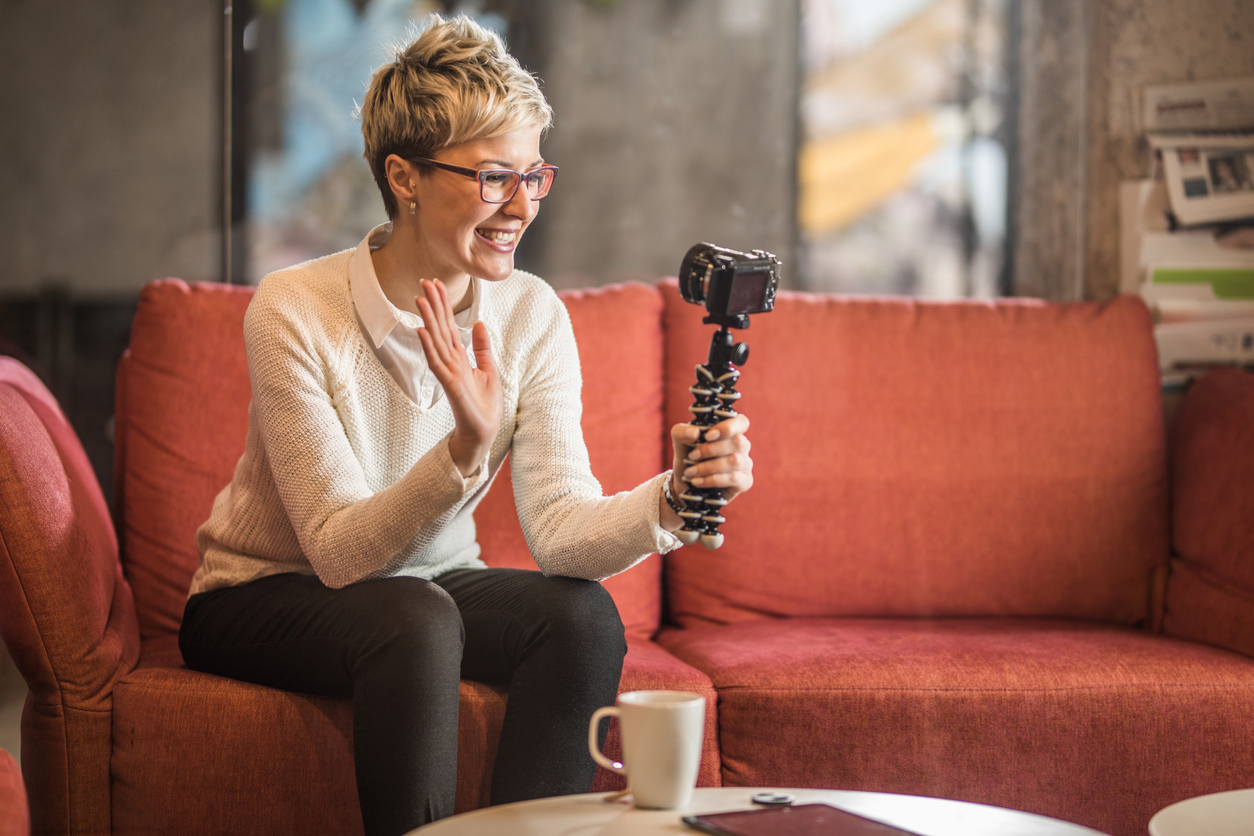Have you ever bought something because someone famous—maybe a celebrity—convinced you the product was a good one? Well, you’re not alone, because lots of other people have done the same thing. Buying things because someone persuasive (famous or not so famous) endorsed it is commonplace—so much so that marketers have seized upon it to bolster the power of their marketing strategy. It even has a name: it’s called influencer marketing.
WHAT IS INFLUENCER MARKETING?
When someone whose opinion you trust and value says that a given product or service works for them, or does what it claims to do, you naturally believe them, increasing the odds that you’ll also use that product or subscribe to that service. This is the essence of influencer marketing—but, of course, it has multiple nuances which you need to understand to do it right.
In fact, this is how HubSpot defines influencer marketing:
“Influencer marketing uses top content creators, specialized in their respective niches, to help you improve brand awareness, increase traffic, and drive your brand’s message to your target audience. These content creators already market to your ideal audience across different channels which you can take advantage of for your influencer strategy. Examples of these channels include social media, blogs, columns, digital and print ads, and television. Influencer marketing is increasingly more popular among businesses these days because traditional advertising has become less effective in attracting leads and customers.”
DOES INFLUENCER MARKETING WORK?
In a word, “yes.” Effectively implemented and leveraged, influencer marketing can increase brand awareness, tap into new audiences, boost conversions and increase sales. In fact, a host of recent studies have concluded that influencer marketing can take your marketing strategy to the next level.
Consider for example these head-turning metrics:
- Almost 90% of businesses say that influencer marketing return on investment (ROI) is equal to or greater than that of other marketing channels
- More than 70% of marketers report that the quality of site traffic generated from influencer marketing is better than from other sources.
- Influencer marketing campaigns that focus on branding or engagement increase ROI by 8X
- Marketers report that influencer marketing substantially increases brand awareness, reaches new markets and boosts both sales and conversions

ARE ALL INFLUENCERS THE SAME?
No, there are several types of influencers. Each necessitates a slightly different relationship with the business that leverages their influence, and each has a slightly different impact on your marketing strategy.
Here are the 5 main types of influencers:
- The Micro-Influencer: They have a powerful influence, but one limited to thousands of consumers within their niche. Typically, they communicate with their target audience through social media, blogs and media platforms. The best way to engage the micro-influencer is to ask them to write a social media post or blog endorsing your product.
- The Celebrity Influencer: Self-explanatory, celebrity influencers are famous people with typically millions of followers. Because of their fame, they provide powerful social proof of the quality of the products they endorse. They can offer powerful product endorsement through a variety of channels, from social media to print, online ads, TV, and blogs. You can ask them to pose for photos endorsing your products or write influential reviews for you.
- The Blog Influencer: Now these are people who establish themselves as thought leaders through their blogs. They can have thousands, in some cases millions, of followers. You can leverage their influence by writing a guest blog on their site or ask that they mention your business in one that they write.
- The Social Media Influencer: They influence consumers via social media platforms like Facebook, Twitter, LinkedIn, and YouTube. A social media influencer can have millions of readers or viewers and cover a wide range of industries, from cars and workouts to health, interior design, travel and fashion. To leverage their power, you need first to ensure that the industry in which they have influence aligns with your brand and advances your marketing objectives. Second, you need to partner with them to create content that matches the social platform they appear on (for YouTube, for example, your content would be video).
- The Key Opinion Leader (KOL): These are thought leaders and experts within a narrow niche, which means they’re a prudent choice if yours is a niche industry. They typically appear on social media and in blogs. You could ask them to review a product on YouTube or pen a blog endorsing your products and brand.
WHAT’S THE BEST WAY TO CREATE AN INFLUENCER MARKETING STRATEGY?
Because every business is different, there’s no one-size-fits-all approach that will work for every business. There are, however, several best practices to increase the likelihood that your influencer campaign will be successful.

1. ESTABLISH REALISTIC GOALS
Begin by thinking SMART—which is to say, your goals should be specific, measurable, attainable, realistic and time-bound. Your goals should also be directed towards 3 key factors:
- Reach: Your ability to deliver content to the right consumers through your influencer.
- Relevance: Your influencer should be credible within your market niche
- Resonance: The influencer’s ability to drive desired actions like visiting your website, encouraging conversions, or buying products and services, will play a key role in driving ROI
2. MAKE SURE YOUR AUDIENCE AND THE INFLUENCER’S AUDIENCE ALIGN
Your marketing goals, target audience, and buyer personas don’t change when you work with an influencer, so it’s important before you choose one to ensure the people they influence overlap with the consumers your targeting. This means of course that you need to thoroughly understand who your target audience is before you choose an influencer.
3. KEEP IT WITHIN YOUR BUDGET
If you’re a small business or a startup, it’s generally not realistic to think you can tap a celebrity influencer—you’re probably better targeting a micro-influencer who won’t break the bank. Whereas micro-influencers will generally cost $80-500 for a piece of content, a celebrity influencer could run as high as $500,000!
4. MAKE SURE THE INFLUENCER IS A GOOD FIT FOR YOUR BUSINESS
If you sell children’s clothing, you don’t want to choose an influencer who’s on record as not liking children. Make sure your influencer’s lifestyle aligns with your brand, that they haven’t endorsed your competitors, and that their audience aligns with yours.
5. MAKE SURE YOU AND THE INFLUENCER ARE ON THE SAME PAGE
When it comes to effective influencer marketing, don’t assume anything. You need to carefully review your expectations for them—and of course their expectations for you. You can meet in person, discuss details via email or speak over the phone—but however you hook up, make sure all your questions (and theirs) are answered before proceeding.
6. MEASURE RESULTS
No marketing campaign is a one-off deal or an isolated event, which means measuring results is always important. Has your influencer campaign achieved the (measurable) goals you established? What worked—and what didn’t? The results of your influencer campaign should provide valuable marketing insights that will inform future campaigns and ensure continual improvement.

CONCLUSION
Influencer marketing—like any other type of marketing—will succeed if you have a smart plan, establish SMART goals and test your results. However, because influencer marketing entails partnering with someone outside your business, there’s the additional need to find the right person to help sell your products. If you find the right influencer, one whose values and past work align with those of your business and who is likely to be persuasive with your prospective customers, influencer marketing can take your business to the next level.